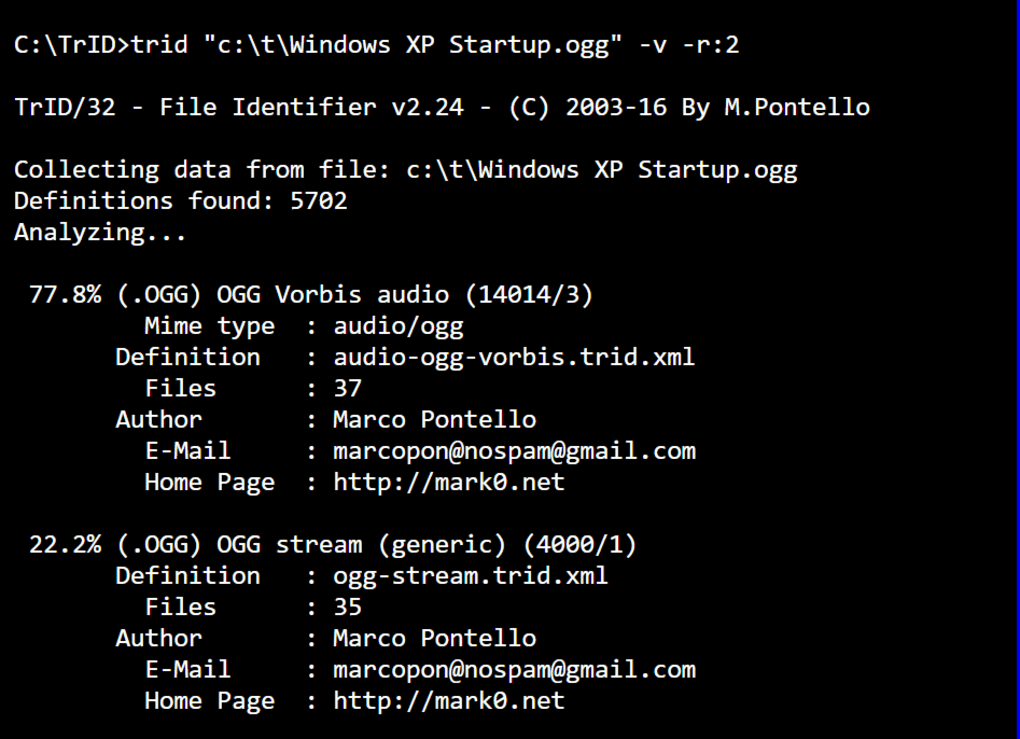TrID Have you ever been in a situation where you don't know what TrIDNet TrIDNet is the GUI.Net version of TrID! Have you ever been TrID PHP Integration An PHP class which calls TrID. It returns the results as Visit HotFiles@Winsite for more of the top downloads here at WinSite! Download the TRID: Separate Construction Loan Disclosure Guide, version 1, providing TRID guidance for construction-permanent loans using separate disclosures. Supervision and examination materials Guides to how the Bureau will supervise and examine entities under its jurisdiction for compliance with Federal consumer financial law. TRID the TRIS and ITRD database. FORENSIC ASPECTS OF DRIVER PERCEPTION AND RESPONSE. Many accident cases come down to questions of what a driver could have or should have seen and/or how long it would take a driver to respond in an emergency situation. This book pulls together the available information on both these important subjects.
Download TriDef SmartCam 2.1.6 from our website for free. The most popular versions among the software users are 2.1, 1.7 and 1.6. The most frequent installer filename for the software is: TriDefSmartCam.exe. TriDef SmartCam relates to Communication Tools.
Drivers often perform non-driving activities that divert their attention from the primary task of driving. This may be due to conversing with a passenger, dialing or hanging up a cell phone, having a phone conversation, or adjusting the radio or other vehicle controls. A driver may also lose focus on driving due to engaging in nondriving cognitive activities, such as being lost in thought or thinking about personal or financial problems. In addition, some crash-associated factors such as driver age and gender, roadway traffic, and environmental conditions may influence a driver’s likelihood of engaging in non-driving activities. NHTSA conducted the National Motor Vehicle Crash Causation Survey (NMVCCS) to collect on-scene information on several crash factors, including the ones related to driver inattention. The NMVCCS data was used in this study to look at two facets of distracted driving, namely distraction from sources within the vehicle and non-driving cognitive activities, as associated factors. A descriptive analysis of the weighted data brought out some interesting facts about distracted driving. For example, the results show that, among the crash-involved drivers, distraction from internal sources was more common than distraction due to non-driving cognitive activities. The data also revealed that conversing with a passenger was the most common source of distraction from internal sources, while inattentiveness due to unknown thought focus was the most prevalent factor among the non-driving cognitive activities. Other important patterns detected include the decreasing trend in distraction from internal sources with increasing driver age; the high incidence of drivers under 16 who were thinking about personal problems, and drivers 16 and older who were inattentive due to some unknown thought focus during the pre-crash phase. This report provides necessary details of the NMVCCS data followed by discussion on the choice of the relevant variables and the analysis methodology. The results from univariate and bivariate analyses are discussed in detail, reflecting on the impact of distracted driving on crash occurrence.
- Record URL:
- http://www.distraction.gov/downloads/pdfs/distracted-driving-and-driver-roadway-environmental-factors.pdf
- Corporate Authors: Mathematical Analysis Division, 1200 New Jersey Avenue, SE
Washington, DC United States 20590 - Authors:
- Singh, Santokh
- Publication Date: 2010-9
Language
- English
Media Info
- Media Type: Web
- Edition: Technical Report
- Features: Appendices; Figures; References; Tables;
- Pagination: 40p
Subject/Index Terms


- TRT Terms: Attention; Attention lapses; Cognition; Crash causes; Distraction; Drivers; Highway safety; Traffic crashes
- Subject Areas: Highways; Safety and Human Factors; I83: Accidents and the Human Factor;
Filing Info
Trid 3.0
- Accession Number: 01354107
- Record Type: Publication
- Report/Paper Numbers: HS-811 380
- Files: HSL, TRIS, ATRI, USDOT
- Created Date: Sep 14 2011 3:05PM

Comments are closed.